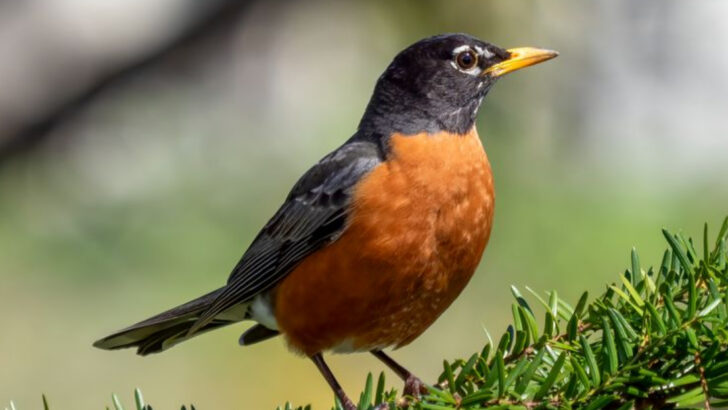The American Robin isn’t just a background bird—it’s a feathered superstar hiding in plain sight.
Sure, you’ve seen them hopping across lawns like they own the place. But behind that sweet song and orange belly is a bird with some serious edge.
They’re early risers. Fierce worm hunters. And when spring rolls around? They’re the ones calling the shots, sounding the alarm that winter’s over.
From clever parenting tricks to surprising migration habits, the American Robin has a few secrets up its wings. This isn’t your average backyard visitor—it’s the bird world’s underrated icon. Let’s pull back the curtain.
Vibrant Plumage

The American Robin’s vibrant plumage is a visual treat. Its striking orange breast and gray-brown wings create an unmistakable appearance. During spring, their colors appear even more vivid, making them easy to spot in gardens and parks. This colorful display is not just for show; it plays a role in attracting mates and establishing territory. The contrast between the orange and gray is a delightful sight, symbolizing the changing seasons. These colors are a hallmark of the American Robin, drawing admiration from birdwatchers and nature enthusiasts alike.
Melodious Song
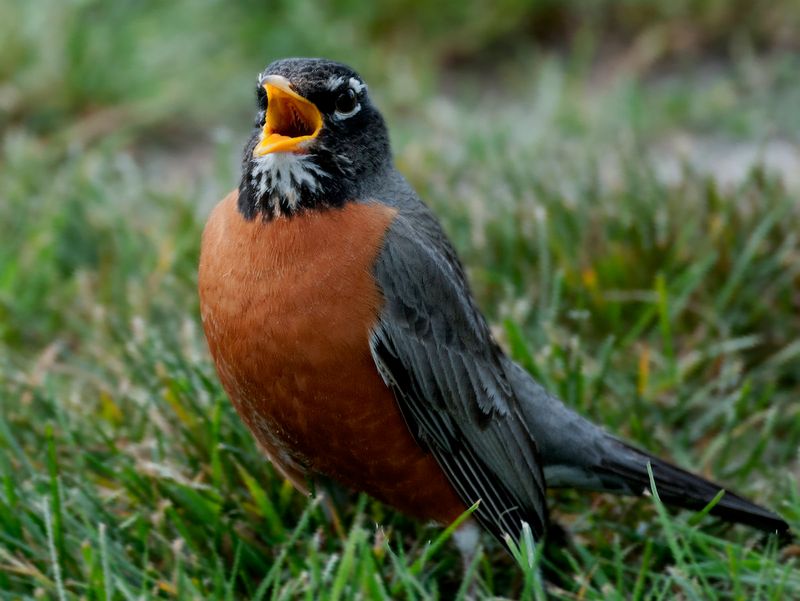
With a song as sweet as its appearance, the American Robin’s melodious tune is a morning soundtrack for many. Their song consists of a cheerful series of phrases, repeated in patterns. Often heard at dawn, their singing marks the start of a new day. The American Robin’s song plays a vital role in communication, from warning of danger to attracting potential mates. Its melodious quality is soothing to human ears, often associated with the freshness of spring. This musical talent sets the American Robin apart in the avian world.
Early Migrator
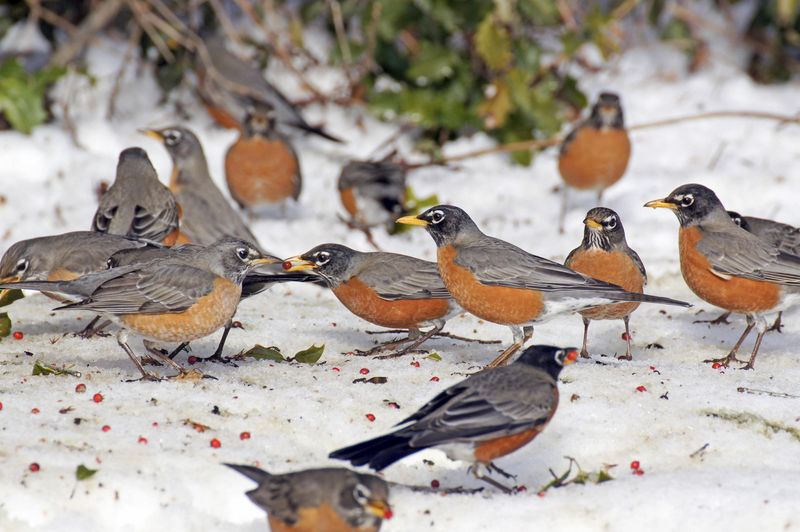
The American Robin is often one of the first birds to migrate, heralding the arrival of spring. Their early migration is a remarkable feat, driven by their search for food and breeding grounds. Unlike many other birds, robins are known to travel alone or in small groups, making their journey unique. This early migration allows them to claim the best territories before their competitors arrive. It’s a testament to their adaptability and survival instinct, as they follow the cues of nature to embark on their seasonal journey.
Worm Diet Specialist
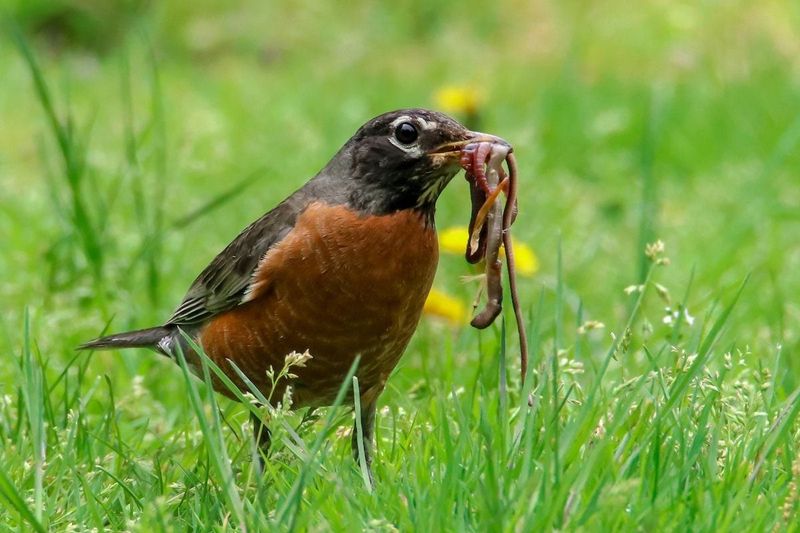
Known for its skill in worm hunting, the American Robin is a true specialist. With keen eyesight, they can spot worms from a distance, making them efficient predators. Their diet primarily consists of worms, but they also enjoy fruits and insects. The robin’s ability to locate worms is not just instinctual; it involves careful listening and watching for movement in the soil. This dietary preference showcases the bird’s adaptability and resourcefulness, contributing to its success in various habitats.
Distinctive Nesting Habits
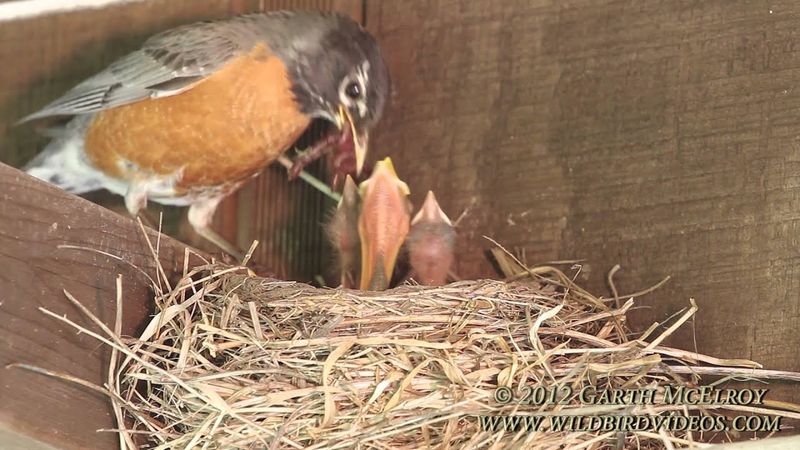
The nesting habits of the American Robin are an architectural marvel. Using twigs and mud, they construct sturdy nests that withstand various weather conditions. Their nests are often found in trees or shrubs, providing safety for their young. Robins are known to produce multiple broods in a season, demonstrating their dedication to family. These nests are not only functional but also showcase the bird’s ingenuity and craftsmanship, making them a fascinating subject for birdwatchers and nature lovers.
Adaptability to Urban Areas
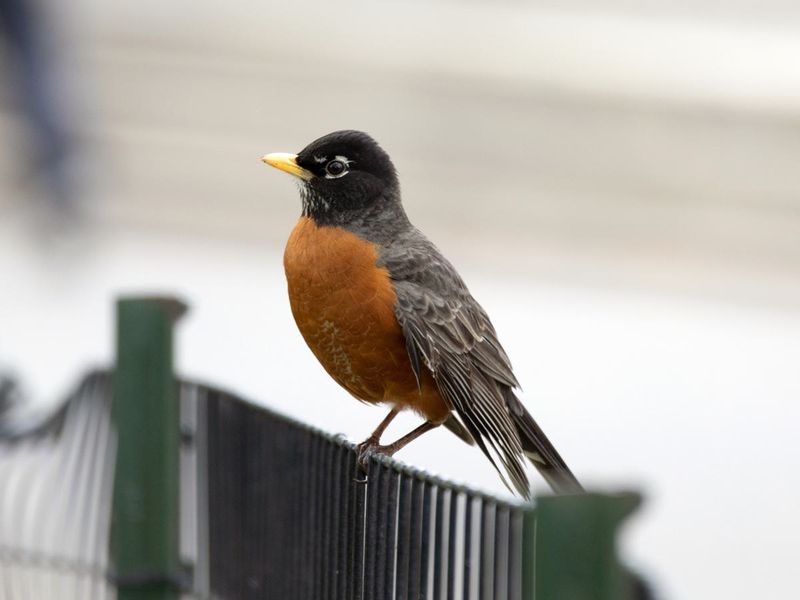
The American Robin’s adaptability to urban environments is a testament to its resilience. These birds are commonly seen in city parks, gardens, and even on suburban lawns. Their ability to thrive in diverse settings highlights their flexible diet and nesting habits. Unlike many other species, robins have successfully integrated into human-altered landscapes. This adaptability not only ensures their survival but also brings a touch of nature to urban dwellers’ daily lives.
Fascinating Flight Patterns

The American Robin’s flight is a blend of grace and agility. They exhibit a unique flight pattern characterized by rapid wing beats followed by a brief glide. This style allows them to efficiently cover large distances during migration. Robins are strong fliers, capable of reaching impressive speeds. Their flight is not only a mode of travel but also a display of their physical prowess. Observing a robin in flight offers a glimpse into the intricate mechanics of bird locomotion, captivating birdwatchers and nature enthusiasts.
Social Behavior
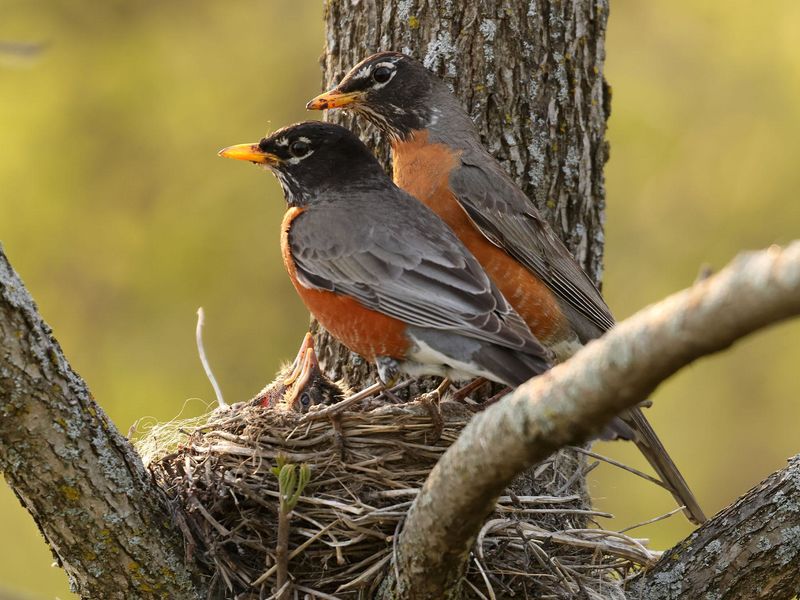
American Robins exhibit engaging social behaviors, often seen in flocks during migration and winter. They communicate through a variety of calls and songs, strengthening social bonds. These interactions are complex, involving group foraging and communal roosting. During breeding season, robins become more territorial, showcasing a different aspect of their social dynamics. Their ability to switch between solitary and social living exemplifies their adaptability. This social versatility makes them a captivating subject for behavioral studies.
Role in Ecosystem
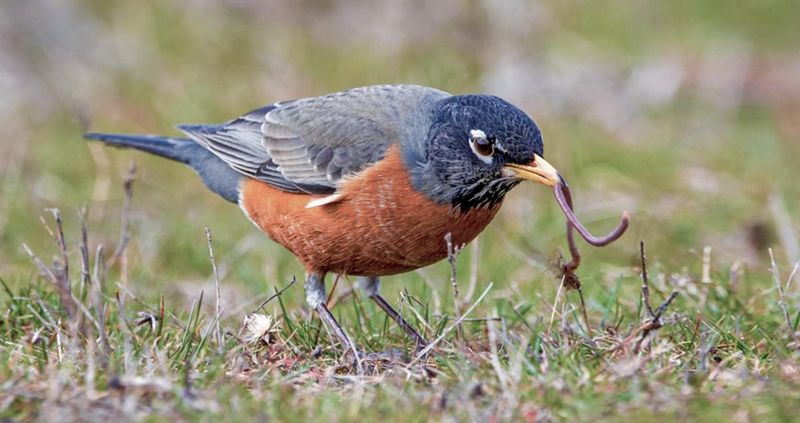
As a key component of the ecosystem, the American Robin plays a vital role in pest control and seed dispersal. By feeding on insects, they help maintain a balanced environment. Their diet also includes fruits, facilitating seed dispersal across different regions. This ecological role highlights their importance beyond mere aesthetics. Robins contribute to the health of forests and gardens, making them indispensable to biodiversity. Their presence is a sign of a thriving ecosystem, underscoring their significance in nature.
Seasonal Behavior
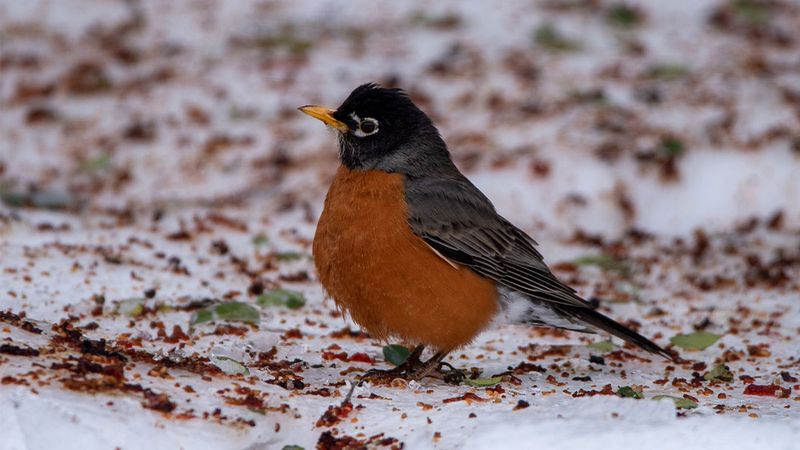
The seasonal behavior of the American Robin is marked by adaptability. During winter, these birds shift their diet to berries and fruits, showcasing their resourcefulness. Their ability to endure cold climates is aided by physiological adaptations, enabling them to survive harsh conditions. In the breeding season, they become more territorial, focusing on raising their young. These seasonal changes reflect the robin’s resilience and strategic survival tactics, making them a subject of interest for ornithologists and bird enthusiasts.
Cultural Symbolism
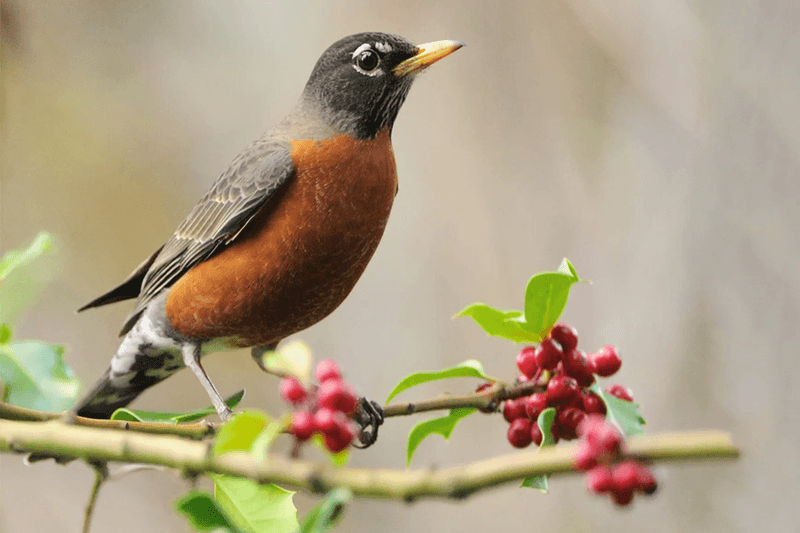
The American Robin holds cultural significance as a harbinger of spring. Their arrival is often seen as a sign of renewal and hope, celebrated in folklore and literature. This symbolism extends across various cultures, where the robin is associated with joy and new beginnings. Their cheerful song and vibrant appearance further enhance their cultural presence. The robin’s role as a symbol of change and rejuvenation adds a layer of depth to their natural beauty, resonating with people around the world.
Unique Molting Process

The molting process of the American Robin is a fascinating transformation. Unlike some birds, robins molt gradually, ensuring they remain active and capable of flight. This process involves shedding old feathers and growing new ones, which can last several weeks. Molting serves to maintain the health of their plumage, enhancing their appearance and functionality. Observing a robin during molting offers insight into the natural cycles of bird life, revealing the meticulous care involved in their upkeep.
Longevity and Survival
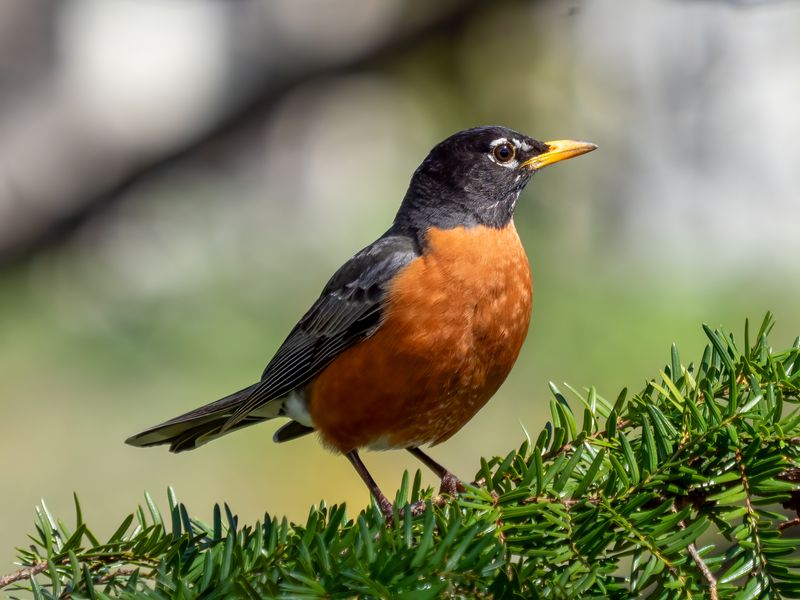
Despite the challenges of the wild, American Robins can live surprisingly long lives. Their average lifespan ranges from 2 to 6 years, with some individuals reaching over a decade. Successful survival is aided by their adaptability and keen instincts. Older robins often exhibit signs of experience, becoming proficient in food gathering and territory defense. Longevity in robins is a testament to their resilience and adaptability, making them a symbol of perseverance in the bird world.

